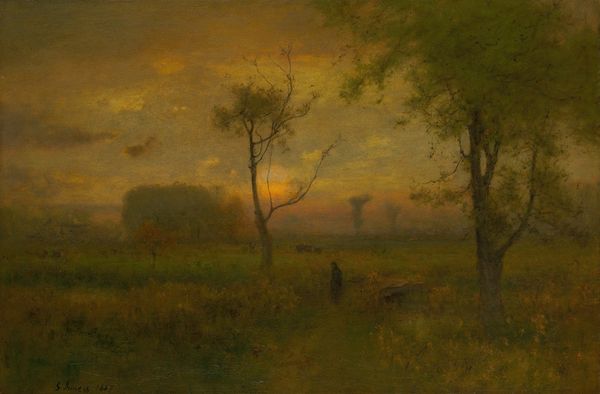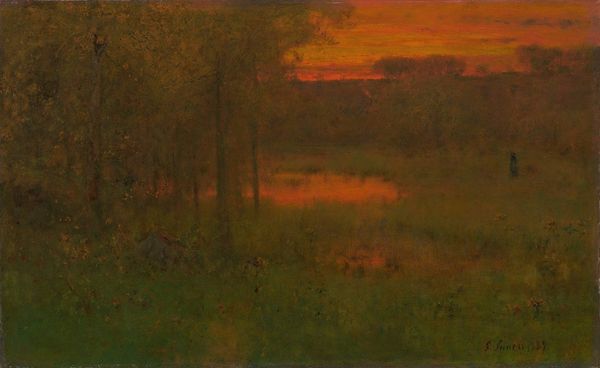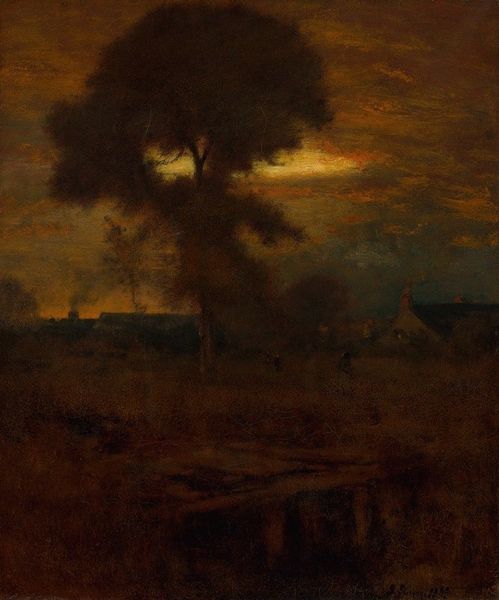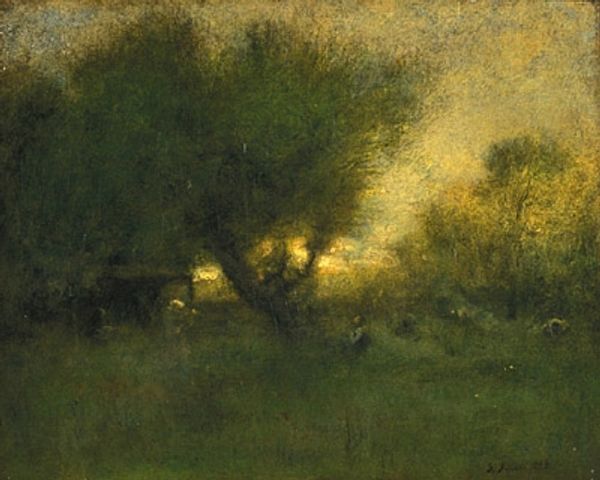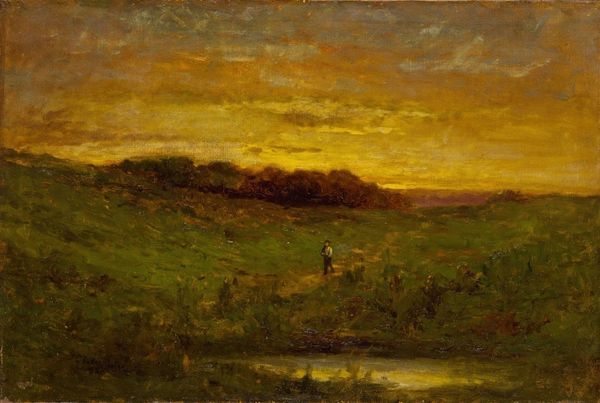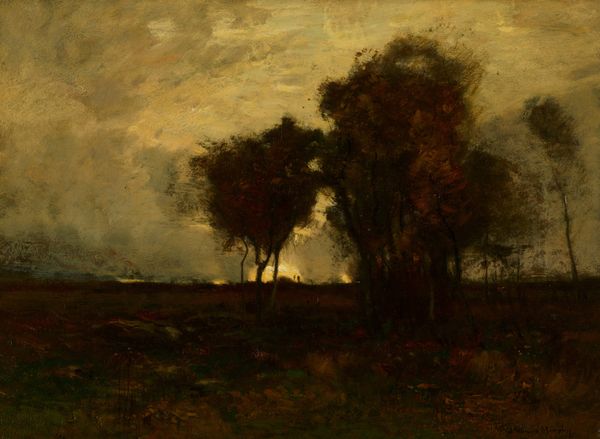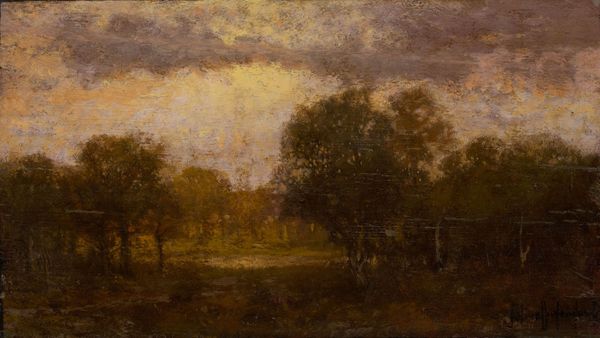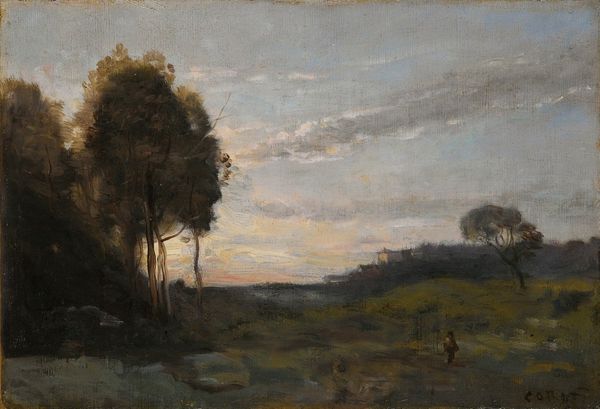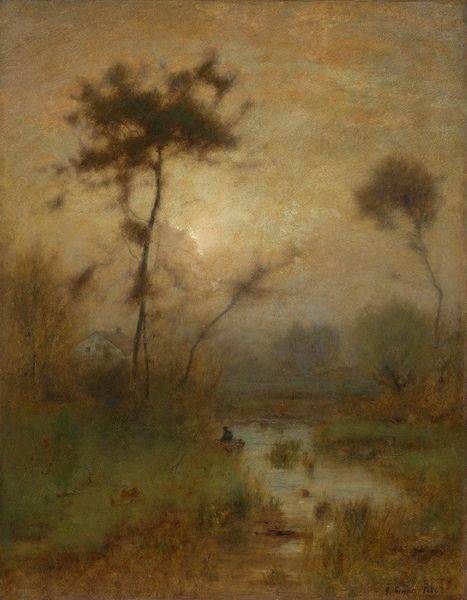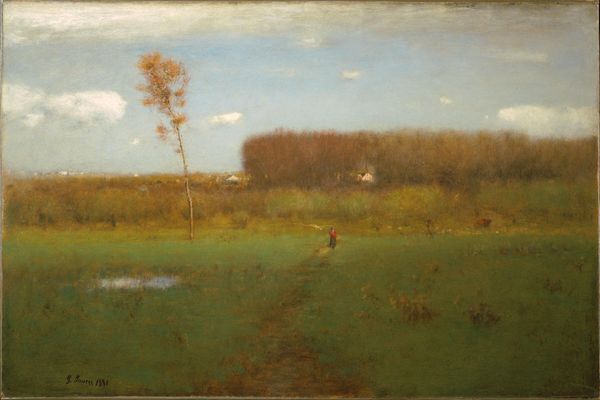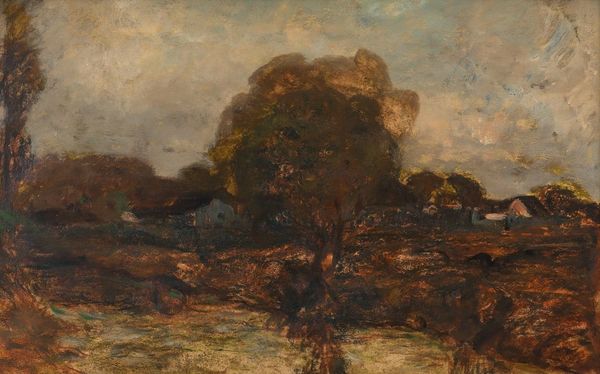
Copyright: Public Domain: Artvee
Editor: So, this is George Inness's *Afterglow on the Meadow*, painted around 1888 to 1892. It’s an oil painting, and right away I’m struck by the almost dreamlike quality. It’s both realistic and evocative. What do you see in this piece? Curator: I see a tapestry woven with cultural memory. The scene itself – the meadow, the afterglow – is a common Romantic trope, representing a harmonious relationship between humanity and nature. But Inness adds a layer, doesn’t he? Editor: How so? Curator: The 'afterglow' isn't just visual; it's metaphorical. Consider the Hudson River School and the idea of the American landscape as a symbol of promise and divine presence. Then, note the fading light. Doesn’t it suggest a contemplation of time passing, of eras ending? Editor: It does give a sense of something lingering…like a beautiful memory. I’m also seeing impasto marks, but they are applied with a softness to highlight the trees in the center ground. Is there more meaning there? Curator: Yes, I agree about the impasto technique highlighting the subject. Tree forms frequently signify family lineage, the cycle of life and knowledge, as rooted ancestors. Editor: So, Inness is not just depicting a landscape but engaging with ideas about memory, change, and our relationship with the land. Curator: Precisely. He’s layering symbolic weight onto familiar forms, prompting us to reflect on the emotional and cultural resonance of the American landscape. What do you think you’ll take away from this discussion? Editor: The landscape becomes a powerful container for history and feeling. Thanks!
Comments
No comments
Be the first to comment and join the conversation on the ultimate creative platform.
